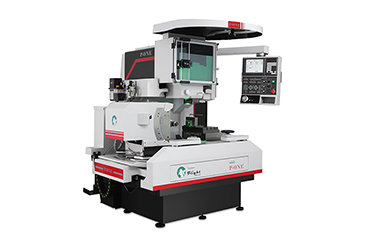

Optical curve grinding machines can grind holes with very high hole pitch accuracy and various contour shapes. The processing is carried out in conjunction with a plotter. The plotter sketches the graphics to be processed onto the film, which is then attached to the projection screen and corrected. The processor will perform the forming processing based on the shapes on the film. Optical projection grinding is suitable for the forming grinding of high-hardness materials, such as tungsten steel parts or hard alloy workpieces, and occasionally some high-speed steel workpieces. Generally, it is used to process parts such as cutting edges and punches for connector dies, terminals, precision half-stroke punches, lower die inserts and discharge plate inserts, etc.
Grinding machines are precision equipment for performing fine processing on the surfaces of parts, especially hardened workpieces. The grinding machines mainly used in mold processing are surface grinding machines, universal internal and external cylindrical grinding machines, and coordinate grinding machines (PG optical curve grinding machines). The small grinding machine is mainly used for processing small-sized mold parts, such as precision inserts, precision mandrels, precision punches, sliders, etc. Large water grinding machines are often used for processing larger-sized templates. Nowadays, the high-speed movement of grinding wheels and worktables in surface grinding machines has become a common trend. Due to the adoption of advanced functional component technologies such as linear guides, linear motors, and hydrostatic lead screws, the movement speed has greatly improved. Additionally, the grinding wheel dressing technology has been continuously refined. The minimum vertical feed rate of the grinding head can reach 0.1μm, and the grinding surface roughness is Ra< With a processing accuracy of 0.05μm, it can be controlled within 1μm, achieving ultra-precision grinding processing.